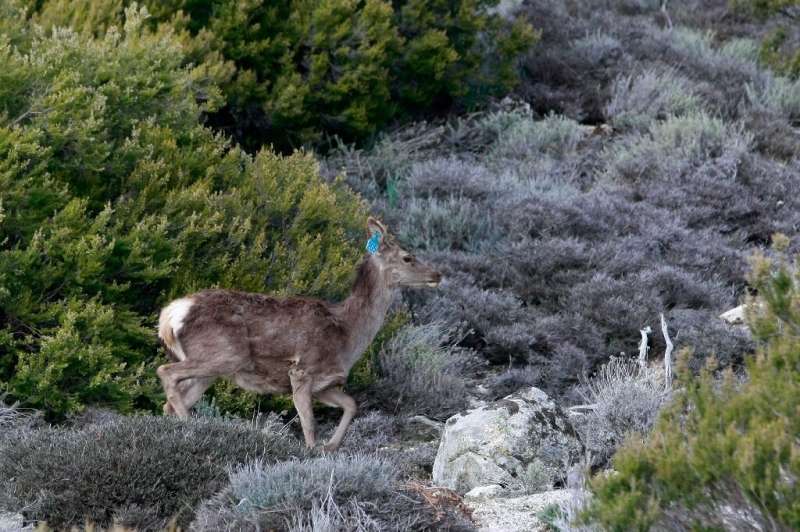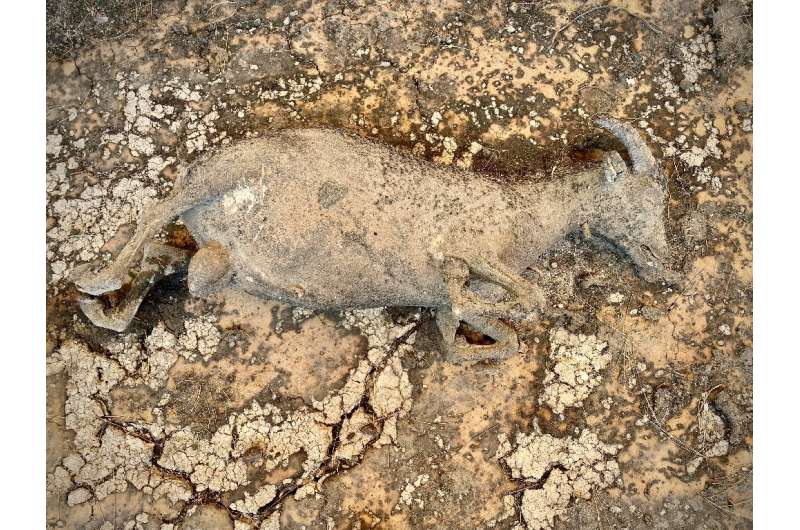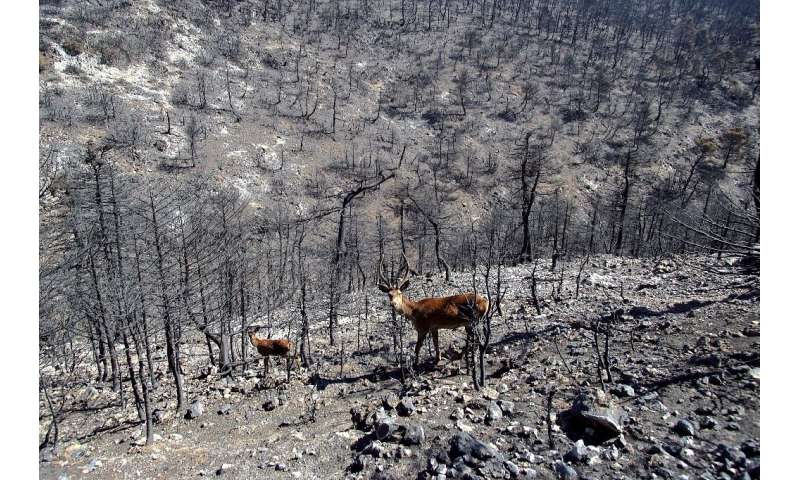‘Countless’ animals threatened by fires ravaging Europe

As wildfires supercharged by climate change-induced drought and heatwaves ravage southern Europe, conservationists are increasingly concerned for the fate of the continent’s wild species which are struggling to stay ahead of the rampaging blazes.
“Fires falling outside natural patterns are jeopardising the survival of wildlife, which are killed or injured through direct contact with smoke and flames or suffer widespread habitat destruction,” Margaret Kinnaird, global wildlife practice leader at WWF International, told AFP.
While it is hard to gauge the impact of individual fires on specific species, there is no doubt that the blazes destroying thousands of hectares of their natural habitat is bound to disrupt certain animals.
“There are so many fires it is impossible to know which ones are serious and having an impact,” said Craig Hilton-Taylor, head of the International Union for the Conservation of Nature Red List unit.
“In an area impacted by fire, it will also depend on the species found at those sites as to how susceptible they will be -– some species are tolerant of fires and others may even thrive after fire.”
Turkey
According to WWF’s preliminary observations, the fires in the forests and mountains of Turkey’s southern Mugla and Antalya provinces have caused “extensive damage” to habitats of desert lynx, wild goat, eagle owl and woolly dormouse.
In total the environment inhabited by 121 species has been damaged in Antalya and by 87 species—including woodpeckers and reptiles—in Mugla.

Greece
In neighbouring Greece, WWF said it had recorded “major disasters in many parts of the country, with the recent forest fires affecting vital ecosystems and countless wild and domestic animals.”
It said that the hard-hit north of the Attica region was home to the only area in southern Greece where critically endangered red deer lived, adding that the region was home to two packs of grey wolves, another endangered and protected species.
Italy
Italy’s national Aspromonte park, which comprises a large part of the Cantabria region, has been hit by a string of fires in recent weeks.
The park is home to the rare forest dormouse, WWF said.
Flames were also threatening several species endemic to Sardinia, “one of the most biodiversity-rich regions in the Mediterranean,” it added.
Among those at risk are the Sardinian deer, which was saved from extinction in the 1980s, the Sardinian partridge and the Sardinian hare, it said.
Fires in Abruzzo, Sardinia, Puglia and Sicily were having a “huge impact on wildlife and important ecosystems that are already threatened by fragmentation, land transformation, hunting, poaching and illegal logging,” WWF said.
-

Dozens of species are endemic to regions currently burning in Russia.
-
![Fires hit parts of Europe most years, and frequently burn protected areas of national park]()
Fires hit parts of Europe most years, and frequently burn protected areas of national park.
-

Swathes of Greece including biodiversity hotspots have burned this summer.
France
A large blaze ravaging southern France near the tourist hotspot of Saint Tropez has burned part of the Plaine des Maures nature reserve.
The reserve is one of the last spots where Hermann’s tortoises—Europe’s last land turtle—still live. There are around 10,000 of the tortoises in the reserve, according to Concha Agero, deputy head of France’s Office for Biodiversity.
“We hope that with previous fires, they are able to burrow underground and will only be partially burned,” she told AFP.
Russia
Russia’s largest region of Yakutia is ablaze, with fires “threatening many of the large animals that dwell in the region’s protected areas,” according to WWF.
These include populations of elk, wild reindeer, roe deer, brown bears, wolves, wolverines, lynx and flying squirrel, as well as rare species such as musk deer, snow sheep, black-clawed marmot, white cranes, black cranes, gyrfalcons, peregrine falcons, white-tailed eagles, and golden eagles, it said.
New heat record as ‘Lucifer’ sweeps Italy
© 2021 AFP
Citation:
‘Countless’ animals threatened by fires ravaging Europe (2021, August 17)
retrieved 17 August 2021
from https://phys.org/news/2021-08-countless-animals-threatened-ravaging-europe.html
This document is subject to copyright. Apart from any fair dealing for the purpose of private study or research, no
part may be reproduced without the written permission. The content is provided for information purposes only.
For all the latest Science News Click Here
For the latest news and updates, follow us on Google News.


